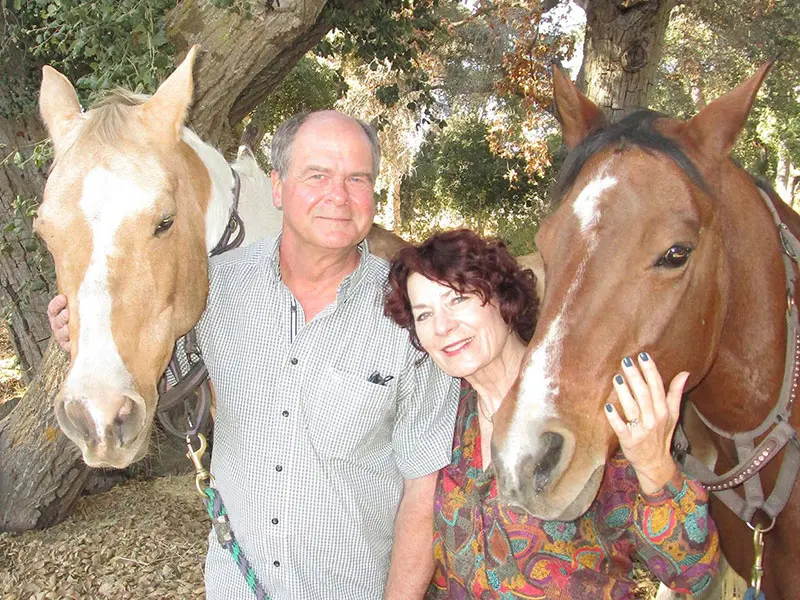Joe Blonski ’s Work Involves More Than Just Spinning Satellites and Wayward Antennas

Joe Blonski ’78 and his wife, Debbie Hauser ’79, ’80, met as students in the Francis College of Engineering. Blonski says the skills he developed as an electrical engineering student prepared him well for a career in the aerospace industry.
11/06/2021
By Madeline Bodin
The GOES satellites built by Lockheed Martin are not just weather satellites, Blonski notes: “They can measure soil density and can tell that California is sinking from all the groundwater pumped out during the drought. They spotted a California wildfire that was only a quarter of an acre in size from thousands of miles away.”
The communications module that Blonski’s team designed is the first element of the satellite’s technology to be turned on when the satellite reaches orbit, springing to life after a series of explosive bolts releases the satellite from its rocket and after it is shaken again by the explosive bolts that release it from its protective shroud. The module is activated while the satellite is tumbling through space before settling into position in geosynchronous orbit, 22,236 miles above the Earth.
NASA, Blonski says, “uses data from this transponder to correct anything that’s going wrong.” The space agency needs that data whether the module’s antenna is pointed toward Earth or away from it. “We design for that,” Blonski says. “We actually test for that.”
Spinning satellites and wayward antennas are not the only out-of-this- world conditions Blonski’s team designs and tests for. “Talk about extreme engineering,” he says. “In the aerospace industry, if something is going to sit on the wing of an aircraft, we design for shock and vibration, for humidity and salt spray, for altitude, for jet exhaust, for temperatures ranging from minus 55 to 125 degrees Celsius.”
“When you start talking about space, it’s even worse, because now you’ve got radiation and you’ve got vacuum,” Blonski says. “I recently found out that we actually use the nuclear research reactor at UMass Lowell for some of our radiation testing. That’s really neat.”
A future as an electrical engineer, let alone as an electrical engineer in the aerospace industry, was not on Blonski’s radar as he approached the end of high school. “I had grown up building houses with my dad,” he says.
He told his high school counselor that he wanted to become an electrical contractor. The guidance counselor steered him toward electrical engineering instead and recommended three engineering schools.
“Thank goodness I picked Lowell,” Blonski says, “because it was an awesome experience, and I met my wife there.” Debbie Hauser ’79, ’80, a plastics engineering alumna, is also an engineer who has master’s degrees from UML and the University of Pittsburgh.
Some of the skills that Blonski developed at UMass Lowell, and that he still uses in his engineering work today, grew not only in the lab and the classroom, but in “the penthouse” of Fox Hall, the university’s 18-story dormitory on East Campus, which Blonski knew as “the towers.”
In his senior year, Blonski was the student activities director for the campus, with a room on the 18th floor of Fox Hall and an office on the fourth floor. “I used to hire entertainment,” he says. “I planned social events. We put on Spring Carnival.”
Blonski says that what he learned through that experience was planning and priorities. Schoolwork had to come first; fun came later. Living in a dorm with what he describes as “a couple hundred of my closest friends” may have also prepared him to work in and lead engineering teams with the diverse skill sets required to design a communications module that works in the extremely harsh environment of space.
Blonski graduated from UMass Lowell and immediately started working for nearby Raytheon Technologies, doing test engineering for missile systems. It was not only his education that got him in the door, he says, but also the university’s close relationships with industry.
“Some people struggle with what they want to do when they get out of school. If you get into the aerospace industry, you really don’t have to choose. I mean, you do everything,” he says.
Blonski and Hauser have remained engaged with UMass Lowell over the years, and in 2020, they were among the distinguished graduates honored with the annual University Alumni Awards.
Blonski has worked for different organizations in different parts of the country through the years, and now lives and works in California. Reflecting on his career, he says the aerospace industry has been a great fit for him.
“I’ll be 65 soon, but I don’t really want to stop. I’ll keep working as long as it’s fun,” he says.
And what could be more fun than sending your work into geosynchronous orbit? The next GOES satellite is scheduled to blast off this March.
